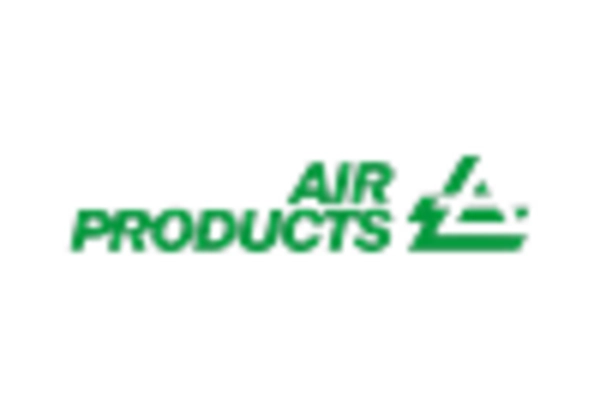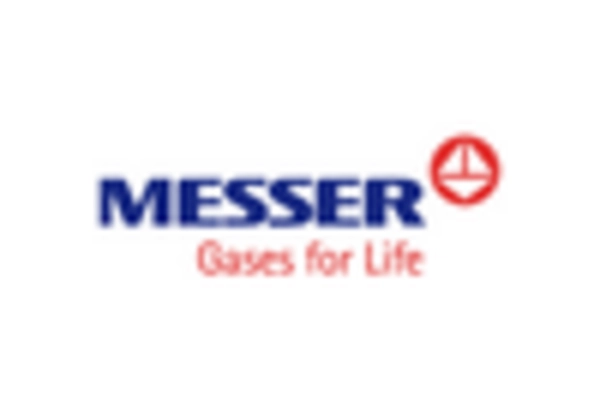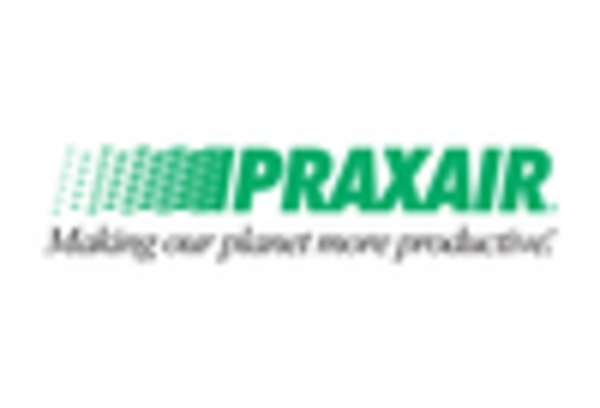Rising Demand for LNG
The increasing demand for liquefied natural gas (LNG) is a pivotal driver for the Cryogenic System Market. As countries strive to transition to cleaner energy sources, LNG has emerged as a preferred alternative due to its lower carbon emissions compared to traditional fossil fuels. The International Energy Agency projects that global LNG demand could reach 700 million tons by 2030, necessitating advanced cryogenic systems for efficient storage and transportation. This trend is further fueled by the expansion of LNG infrastructure, including regasification terminals and liquefaction plants, which require sophisticated cryogenic technologies. Consequently, the growth in LNG demand is likely to bolster investments in cryogenic systems, thereby enhancing market dynamics.
Advancements in Cryogenic Technology
Technological innovations in cryogenic systems are significantly influencing the Cryogenic System Market. Recent advancements, such as improved insulation materials and more efficient liquefaction processes, have enhanced the performance and reliability of cryogenic systems. For instance, the development of high-efficiency cryocoolers has expanded their applications in various sectors, including medical, aerospace, and energy. The market for cryogenic equipment is projected to grow at a compound annual growth rate of approximately 6% over the next five years, driven by these technological improvements. Furthermore, the integration of automation and smart technologies into cryogenic systems is expected to optimize operational efficiency and reduce costs, making them more attractive to end-users.
Expansion of Industrial Applications
The diversification of industrial applications is a notable driver for the Cryogenic System Market. Industries such as food and beverage, pharmaceuticals, and metallurgy increasingly rely on cryogenic technologies for various processes, including freezing, preservation, and material treatment. The food industry, for instance, utilizes cryogenic freezing to maintain product quality and extend shelf life, while the pharmaceutical sector employs cryogenic systems for the storage of sensitive biological materials. The market for cryogenic systems in these sectors is projected to expand as industries seek to enhance efficiency and product quality. This broadening of applications not only fuels market growth but also highlights the versatility and importance of cryogenic technologies across different sectors.
Growing Space Exploration Initiatives
The burgeoning interest in space exploration is a significant catalyst for the Cryogenic System Market. As space agencies and private companies embark on ambitious missions, the need for cryogenic systems to support rocket propulsion and satellite operations becomes increasingly critical. Cryogenic fuels, such as liquid hydrogen and liquid oxygen, are essential for launching spacecraft, and their demand is projected to rise as more missions are planned. The market for cryogenic propulsion systems is anticipated to witness substantial growth, with investments in research and development aimed at enhancing performance and safety. This trend underscores the vital role of cryogenic technology in advancing space exploration and its potential to drive market expansion.
Increased Focus on Renewable Energy Storage
The shift towards renewable energy sources is reshaping the Cryogenic System Market, particularly in the context of energy storage solutions. As the integration of renewable energy, such as wind and solar, becomes more prevalent, the need for efficient energy storage systems is paramount. Cryogenic energy storage systems, which utilize liquefied gases to store energy, offer a promising solution to address the intermittency of renewable sources. The market for cryogenic energy storage is expected to grow as utilities and energy providers seek innovative ways to enhance grid stability and reliability. This trend not only supports the transition to a sustainable energy future but also positions cryogenic systems as a key player in the evolving energy landscape.

















Leave a Comment